4th Sunday of Lent Year A: Laetare Sunday
Sunday March 15, 2026
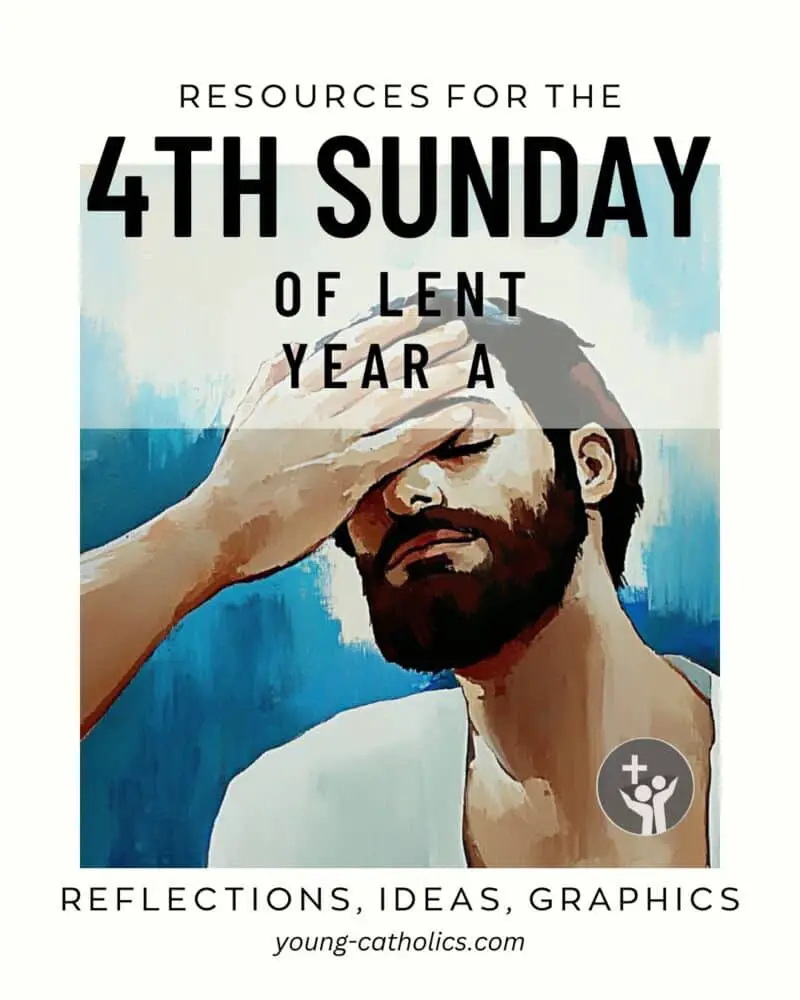
Seeing with New Eyes
The 4th Sunday of Lent Year A brings us stories about seeing in a new way. God helps us look beyond what is on the outside. These readings remind us that God sees people differently than we do. He looks deeper and knows what really matters.
In the first reading, David is chosen to be king, even though he is the youngest and smallest. Everyone thought his older brothers would be picked. But God shows that he sees things others miss. The Gospel also tells about seeing—Jesus heals a man born blind. This healing helps him believe in Jesus.
These readings fit well with Lent. Lent is a time to grow closer to God and let go of things that keep us in the dark. On the 4th Sunday of Lent Year A, we are invited to open our eyes and trust God to lead us. His ways are full of mercy and light.
Mass Readings for the 4th Sunday of Lent Year A
- First Reading – 1 Samuel 16:1B, 6-7, 10-13A: Samuel is sent by the Lord to anoint one of Jesse’s sons as the new king of Israel, replacing Saul. Initially, Samuel believes that Eliab, Jesse’s eldest son, must be the chosen one, but the Lord reveals to him that he looks at the heart, not outward appearances, and leads him to anoint David, the youngest son, who is a shepherd.
- Responsorial Psalm – Psalm 23: The Lord is a faithful and loving shepherd who provides for and protects his sheep. The psalmist describes the Lord’s provision of green pastures and still waters, his guidance through dark valleys, and his comforting presence, and concludes by affirming his confidence in the Lord’s goodness and mercy throughout his life.
- Second Reading – Ephesians 5:8-14: Believers should live as children of light, putting aside the works of darkness and walking in the ways of righteousness. The passage emphasizes the importance of exposing and reproving evil deeds, and notes that everything that is exposed by the light becomes visible and that Christ will shine on those who follow him.
- Gospel – John 9:1-41: Jesus heals a man who was born blind, but the Pharisees are skeptical and investigate the miracle. They interrogate the man and his parents, and ultimately cast the man out for declaring his belief in Jesus as the Son of God.
The readings above are for lectionary cycle A. For other years see the links below:
4th Sunday of Lent Year B
4th Sunday of Lent Year C
One thing I do know is that I was blind and now I see.
John 9:25
Themes for the 4th Sunday of Lent Year A
The 4th Sunday of Lent Year A invites us to reflect on seeing with the eyes of faith. The readings show how God looks at the heart, brings light to darkness, and heals spiritual blindness.
- Seeing as God Sees: God chooses David because of his heart, not his appearance. This reminds us to value inner goodness and to look beyond outward appearances.
- Light and Darkness: Believers are called to live as children of light. This means rejecting sin and letting Christ’s light guide our actions.
- Spiritual Blindness and Sight: Jesus heals the man born blind, revealing spiritual blindness in those who refuse to believe. This shows the importance of faith and openness to God’s truth.
- Faith and Conversion: The blind man’s journey from physical healing to faith in Jesus shows a deep conversion. This challenges us to grow in faith and recognize Jesus as the Son of God.
- God’s Choice and Calling: God chooses David, the unlikely shepherd, to be king. This shows that God often chooses the humble and overlooked to fulfill His plans.
- Courage to Witness: The healed man boldly defends Jesus before the Pharisees. His courage inspires us to stand up for our faith, even when challenged.
The 4th Sunday of Lent Year A challenges us to open our hearts to God’s light and see with faith. It calls us to grow in trust, courage, and love for Christ.
Resources for the 4th Sunday of Lent Year A
Sunday March 15, 2026
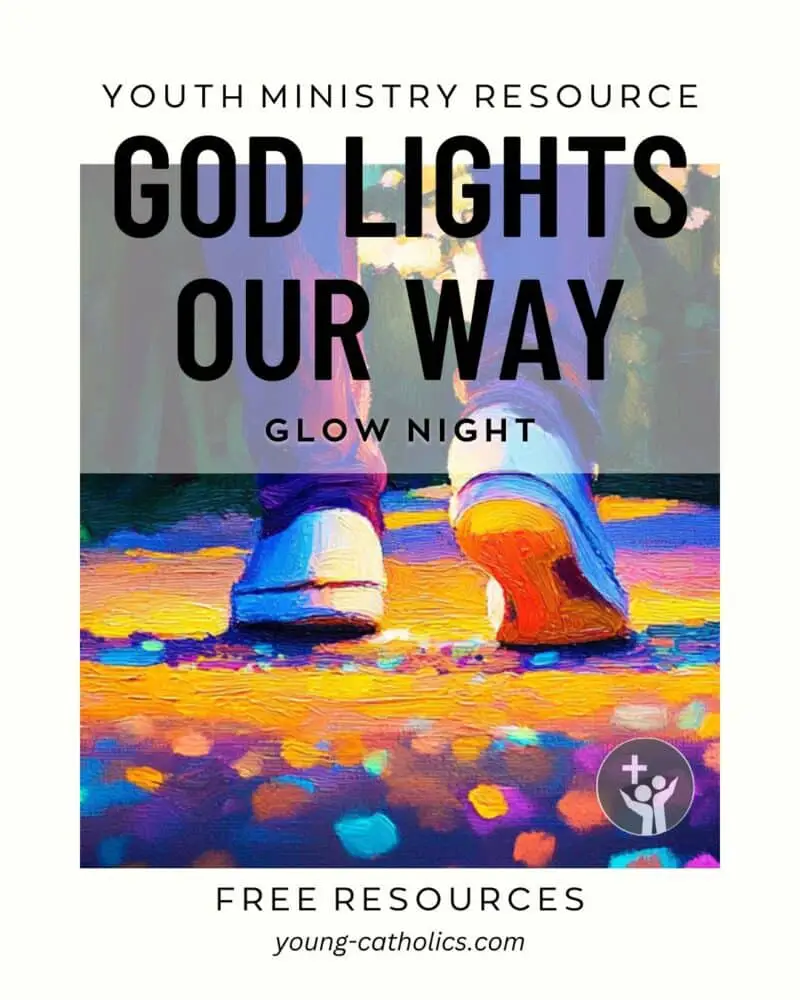
God Lights Our Way
The 4th Sunday of Lent Year A focuses on light and darkness, making it perfect for a GLOW (God Lights Our Way) theme. In the Gospel, Jesus heals a man born blind, showing that faith brings light to those in spiritual darkness. The second reading calls us to live as children of light, leaving behind sin and following Christ. These readings remind us that God’s light guides us and helps us see the truth.
Glow in the dark activities can symbolize how faith brightens our lives. Just as light overcomes darkness, Jesus leads us out of confusion and fear. This theme helps us reflect on how we can carry God’s light into the world. The 4th Sunday of Lent Year A invites us to open our hearts to Christ’s light and live with faith and hope.

Lenten Ideas for Prayer, Fasting, and Almsgiving
Lent is a time for conversion and renewal. Catholics are called to practice self-discipline through fasting, abstaining from meat on Fridays, and making small sacrifices. It is also a season for giving alms and spending more time in prayer. These practices help us grow closer to God and prepare our hearts for Easter.
The 4th Sunday of Lent Year A reminds us to open our eyes to God’s light. Just as Jesus gave sight to the blind man, Lent invites us to see our sins clearly and seek forgiveness. Going to reconciliation is an important way to receive God’s mercy and start anew. This Sunday encourages us to live as children of light, growing in faith and love.
Here is a small sampling of the 75+ ideas for prayer, fasting, and almsgiving on this page:
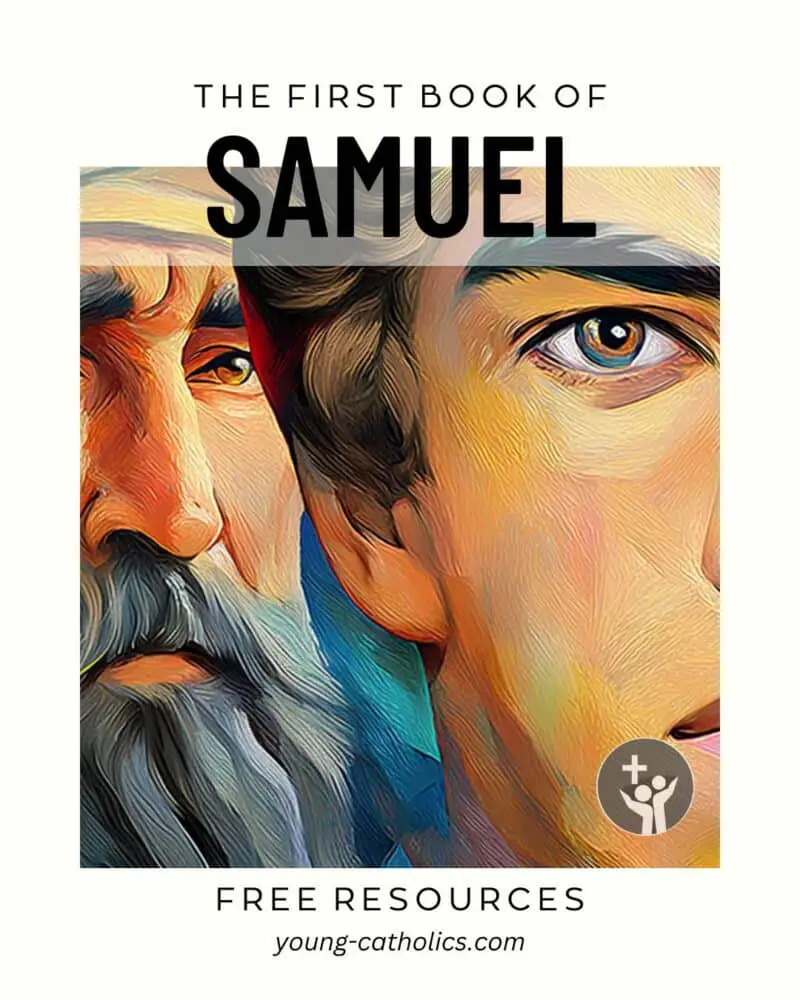
The First Book of Samuel: An Unexpected King
The story of David’s anointing in 1 Samuel 16 shows a turning point in Israel’s history. Saul, the first king, has failed to follow the Lord. Now, God sends Samuel to find a new king—not based on appearance or status, but on the heart. This reflects the book’s theme of God’s sovereignty and his power to raise up leaders.
David is the youngest and least likely son, yet he is chosen. This moment begins a long story of kingship that continues through the rest of 1 Samuel and into 2 Samuel. On the 4th Sunday of Lent Year A, this reading reminds us that God chooses differently than we do and that real strength lies in faithfulness.
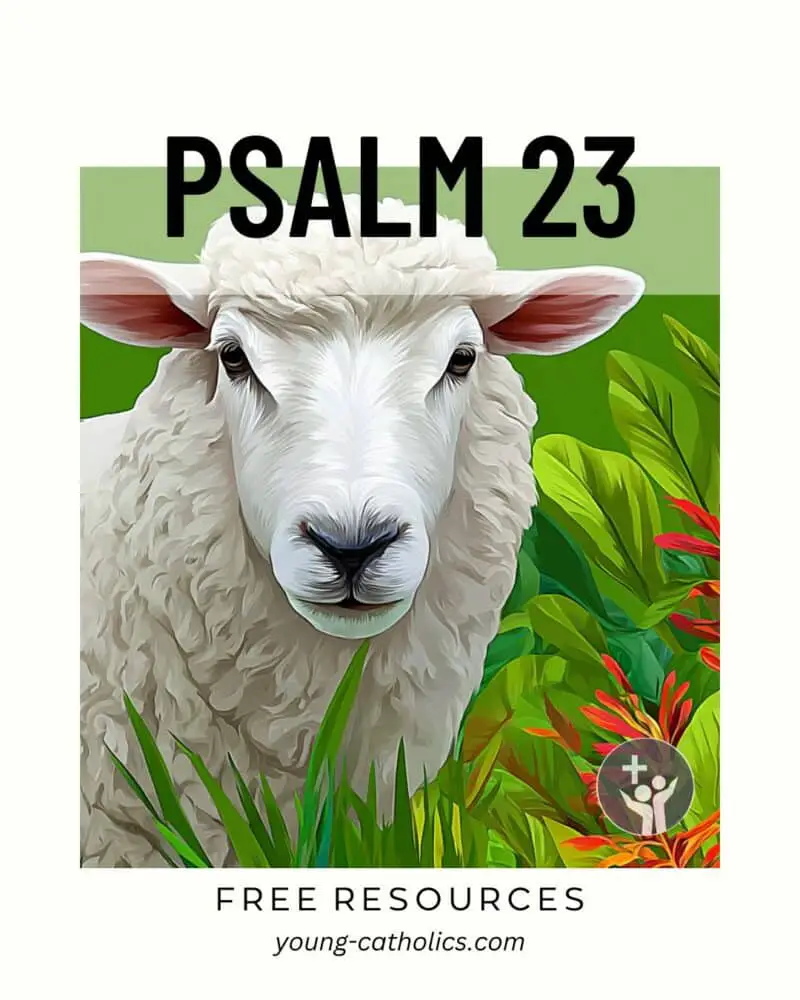
Psalm 23: The Shepherd Who Leads
Psalm 23 expresses deep trust in God’s care. In the book of Psalms, many prayers come from moments of danger or fear, but this one focuses on confidence. God is pictured as a shepherd who guides, provides, and protects. This reflects the psalmist’s relationship with God, rooted in trust and love.
On the 4th Sunday of Lent Year A, Psalm 23 fits with the Gospel’s message of healing and hope. Even in the darkest valleys—like blindness or rejection—God is near. The psalm echoes the book’s broader message of turning to God in every part of life.
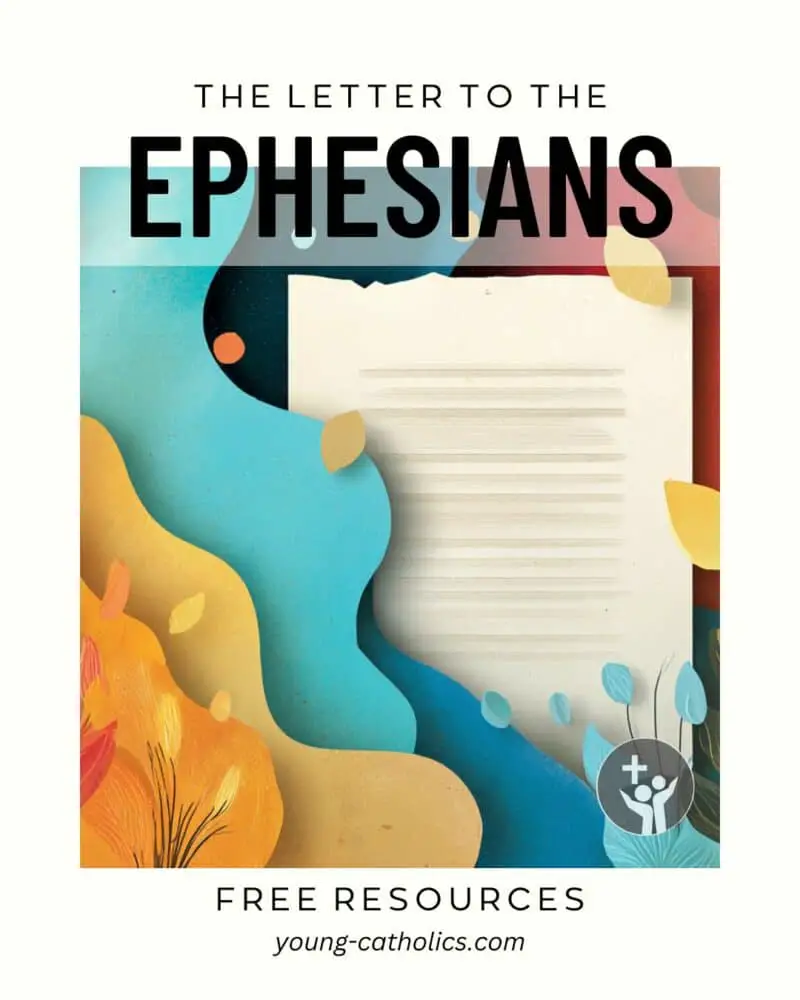
The Letter to the Ephesians: Walking in the Light
Ephesians calls Christians to live differently from the world around them. In this passage, Paul focuses on the contrast between light and darkness. This fits the book’s theme of unity in Christ and the transformation of those who follow him. Believers are to live in a way that reveals God’s presence in their lives.
This reading, chosen for the 4th Sunday of Lent Year A, connects to the Gospel’s story of physical and spiritual sight. When we let Christ’s light shine, our lives become a witness. In Ephesians, Paul reminds the community that they are no longer part of the darkness but are now made new.
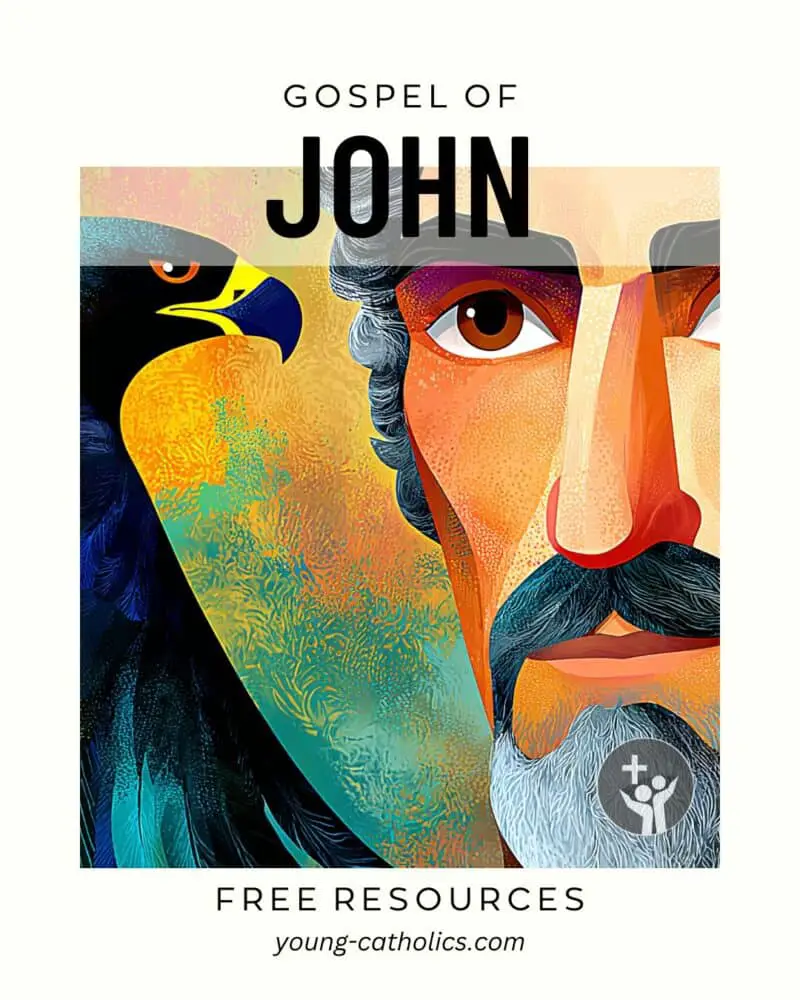
The Gospel of John: Eyes Opened, Hearts Changed
John 9 tells of a man who gains sight and faith. Jesus not only heals his eyes but also reveals a deeper truth. The Gospel of John often uses signs like this to point to who Jesus is—the light of the world. As people respond to Jesus, their reactions reveal their hearts.
The 4th Sunday of Lent Year A centers on the idea of spiritual blindness. In John’s Gospel, faith grows as people encounter Jesus. The once-blind man sees clearly, while others remain stuck in doubt. This chapter shows how faith is not just about sight but about being open to God’s work.
Homilies and Commentaries for the 4th Sunday of Lent Year A
Sunday March 15, 2026
What is the Worst Kind of Blindness?
The Gospel reading for the 4th Sunday of Lent Year A tells the story of a man born blind who is healed by Jesus. He never asks to be healed. Jesus simply sees him and chooses to heal him. This is a story of grace. But the healing brings pushback. Neighbors question him. Religious leaders put him on trial. His parents keep their distance. He is left alone to defend what happened. The story shows that faith can come with a cost.
The man goes on a journey of faith. At first, he doesn’t know who Jesus is. Later, he calls Him a prophet. Then he says Jesus must be from God. Finally, he meets Jesus again and says, “Lord, I believe.” He worships Him. The story from the 4th Sunday of Lent Year A reminds us that we may lose things in this world, but we gain much more by trusting Jesus. This reflection is by Allen Hunt.
I Was Blind and Now I See
In this homily for the 4th Sunday of Lent Year A, Bishop Robert Barron reflects on the healing of the man born blind. He explains that this miracle is not just about physical sight but also about spiritual vision. Jesus is the Light of the World, bringing sight to those blinded by sin. The story shows that we are all born spiritually blind due to original sin, and only Jesus can open our eyes to God’s truth.
Bishop Barron connects this healing to Baptism, where we are washed and given new spiritual sight. He also explains that when we truly encounter Christ, we are transformed and become new people. This can cause confusion or opposition from those who remain spiritually blind. Bishop Barron encourages us to stay faithful and alert, knowing that true sight comes from following Christ, even in the face of opposition.
Seeing As God Sees
In this commentary for the 4th Sunday of Lent Year A, Jeff Cavins explains that God looks at the heart, not outward appearances. He reflects on the first reading, where God chooses David as king because of his heart, not his looks. Cavins connects this to the Gospel story of the man born blind. People judged the man based on his condition, but Jesus saw his true value. This shows that God’s purpose can be revealed even in weakness or hardship.
Jeff Cavins encourages us to see ourselves and others as God does. He explains that our weaknesses and limitations are not punishments but opportunities for God to show His strength. Just as Jesus healed the blind man, God can work through our struggles for His glory. The 4th Sunday of Lent Year A invites us to trust God’s vision and believe that our weaknesses can become strengths through His grace.
Eyesight to the Blind
In this commentary for the 4th Sunday of Lent Year A, Scott Hahn explains that God sees the heart, not outward appearances. He connects this to the first reading, where God chooses David as king because of his heart. Hahn also relates it to the Gospel, where Jesus heals a man born blind, showing that spiritual sight comes through faith. The blind man represents all humanity in need of Jesus, the One sent by the Father to bring light and life.
Scott Hahn explains that the healing symbolizes Baptism, where we are washed clean and given new spiritual sight. Jesus, the Good Shepherd, leads us from darkness to light, just as he led the blind man to see. Hahn encourages us to live as children of light, following Christ and trusting in God’s vision. The 4th Sunday of Lent Year A invites us to see with faith and renew our belief in Jesus.
Reflection for the 4th Sunday of Lent Year A
The 4th Sunday of Lent Year A invites us to see with the eyes of faith. The readings call us to recognize God’s work in unexpected ways and to look beyond outward appearances. They challenge us to live as children of light and to trust God’s purpose, even in times of struggle.
The Significance of the Miracle
In the Gospel for the 4th Sunday of Lent Year A, Jesus heals a man born blind using dirt and saliva. These simple, ordinary things show that God can use anything to bring healing and grace. By using what was considered unclean in Jewish culture, Jesus shows his power to make all things holy.
This miracle also points to spiritual renewal. Just as the man’s eyes were opened, we are called to open our hearts to God. Some see this as a symbol of baptism, where water washes away sin and brings new life. The man moves from darkness to light, just as we do when we are baptized.
Jesus also challenges the belief that suffering is a result of personal sin. He explains that the man’s blindness was not a punishment but an opportunity to show God’s glory. This reminds us that suffering can have a purpose beyond what we see.
This story invites us to reflect on how God works through ordinary things in our lives. It challenges us to see our struggles not as punishments but as ways God’s power can be revealed. It calls us to trust in God’s purpose and healing.
Seeing as God Sees
The first reading for the 4th Sunday of Lent Year A reminds us that God sees beyond outward appearances. When Samuel is sent to anoint a new king, he expects to choose the strongest and most impressive of Jesse’s sons. But God guides him to David, the youngest and least likely choice.
God explains that humans see the outside, but He sees the heart. This challenges us to look beyond looks, status, or wealth and to value inner goodness and faithfulness. It also reminds us to trust God’s choices, even when they don’t match our expectations.
The second reading continues this theme by calling us to live as children of light. We are challenged to see the world through God’s eyes, walking in goodness and truth. Spiritual sight involves seeing things from God’s perspective, not through the lens of selfishness or judgment.
By seeing as God sees, we learn to look at others with love and mercy. We are called to see potential and goodness in others, just as God saw greatness in David. We are also called to examine our own hearts and ask if we are living faithfully.
The 4th Sunday of Lent Year A invites us to develop spiritual sight. It challenges us to see with compassion, trust in God’s choices, and live as children of the light.
Similarities and Differences Between This Encounter and the Encounter with the Woman at the Well
On the 4th Sunday of Lent Year A, the Gospel tells of Jesus healing a man born blind. This follows the story of the woman at the well from the previous Sunday. Hearing these stories together helps us see both the similarities and differences in these encounters.
Both the woman and the blind man are outcasts in their society. Jesus meets them where they are, breaking social barriers. In both cases, his actions lead to a life-changing transformation. The woman becomes a believer and a witness to her community, while the blind man gains both physical sight and spiritual insight.
Both stories reveal Jesus’ identity. To the woman, he speaks of living water, showing himself as the source of eternal life. To the blind man, he reveals himself as the Son of Man. In both encounters, Jesus shows that he is more than a healer—he is the Savior.
However, the community’s response is very different. The woman’s community is open and curious. They come to believe in Jesus because of her testimony. In contrast, the religious leaders reject the blind man’s story and refuse to believe in Jesus, showing their spiritual blindness.
These stories challenge us to respond to Jesus with open hearts. The 4th Sunday of Lent Year A invites us to reflect on our own willingness to see and believe. It asks us if we are open to Jesus’ message or if we allow prejudice or fear to cloud our vision.
The 4th Sunday of Lent Year A reminds us that true sight comes from faith and an open heart. By seeing as God sees and trusting His purpose, we grow closer to Christ. May these reflections inspire us to walk in light and love.
Prayer
Lord, open our eyes to see as you see. Help us to look beyond appearances and to trust in your purpose. Lead us out of darkness and into your light. Give us faith to follow you and courage to share your love. Amen.
Reflection Questions for the 4th Sunday of Lent Year A
- How does God use ordinary things in your life to bring grace and healing?
- What distractions keep you from seeing God’s work?
- How can you live as a child of light?
- Do you judge others by appearances or by their hearts?
- How can you trust God’s purpose in times of struggle?
- What does spiritual blindness look like in your life?
- How can you grow in faith and spiritual sight?
- Are you open to God’s choices, even if they surprise you?
- How can you respond to Jesus with courage and faith?
- What steps can you take to see others with love and mercy?
Social Media Graphics and Bulletin Artwork for the 4th Sunday of Lent Year A
Touched by Light
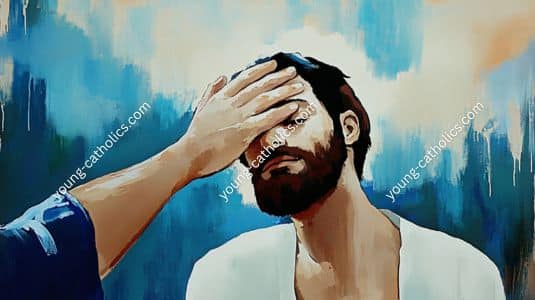
Looking for art to highlight the message of healing and sight on the 4th Sunday of Lent Year A? This image captures the moment Jesus brings sight to the blind man. It’s perfect for bulletins, newsletters, and parish reflections.
Download and share this visual reminder of Christ’s light breaking through darkness. Use it to help others see the Gospel in a new way.
Paid subscribers may download a large copy this digital artwork without watermarks, suitable for use in bulletins, social media, newsletters, etc., free of charge by clicking here. You must be logged in as a paid subscriber to access the file.
Only current paid subscribers have the rights to use the artwork.
Music Suggestions for the 4th Sunday of Lent Year A
Sunday March 15, 2026
The music selections for the 4th Sunday of Lent Year A reflect themes of light, healing, and faith. Many of these songs focus on Jesus as the Light of the World, guiding us out of darkness. Others celebrate spiritual sight and renewal, echoing the healing of the blind man in the Gospel. There are also songs of trust and comfort, reminding us that God is our Shepherd who leads us through difficulties. These choices help to deepen the message of faith, hope, and spiritual awakening found in the readings.
- Amazing Grace, My Chains Are Gone by Chris Tomlin
- Be Thou My Vision by Audrey Assad
- City of God by Dan Schutte
- Healed in Christ by Sarah Hart
- Healing River of the Spirit by Ruth Duck
- I Want to Walk as a Child of the Light by Kathleen Thomerson
- Mighty to Save by Laura Story
- Open My Eyes by Jesse Manibusan
- Open the Eyes of My Heart by Paul Baloche
- Psalm 23: The Lord Is My Shepherd by Rory Cooney
- Psalm 23: The Lord Is My Shepherd by Scot Crandal
- Shepherd of Souls by John B. Dykes & James Montgomery
- The King of Love My Shepherd Is by Henry W. Baker
- The Lord Is My Shepherd by Josh Blakesley
- There Is a Balm in Gilead by Melva Costen
- There Is a Longing by Anne Quigley
- There’s a Wideness in God’s Mercy by Fredrick William Faber
- We Walk by Faith by Marty Haugen
- To You, O God, I Lift Up My Soul by Bob Hurd
- You Are the Healing by Scott Soper
- You Are the Light by Sarah Hart
Music directors and musicians are encouraged to explore these selections for the 4th Sunday of Lent Year A. Consider how these themes of light, healing, and faith can enhance worship. Feel free to share your experiences or suggest other fitting songs in the comments. Your ideas can inspire others and create a meaningful worship experience.
Questions and Answers for the 4th Sunday of Lent Year A
What is the main message of the 4th Sunday of Lent Year A?
The main message is about spiritual sight and faith. Jesus brings light to those who believe in him, while those who reject him remain in darkness.
Why did Jesus use mud to heal the blind man?
Jesus used mud to show his power to heal through simple, earthly things. It also points to God creating man from the earth, showing Jesus’ authority as the Son of God.
What does the healing of the blind man symbolize?
It symbolizes spiritual awakening and faith. Just as the man’s physical eyes were opened, our spiritual eyes are opened when we believe in Jesus.
How does the 4th Sunday of Lent Year A relate to Baptism?
The blind man is healed after washing in the pool of Siloam, which symbolizes Baptism. Through Baptism, we are cleansed of sin and given new spiritual sight.
Why were the Pharisees upset about the healing?
The Pharisees were upset because Jesus healed on the Sabbath, which they saw as breaking the law. They were spiritually blind to the miracle and refused to see Jesus as the Messiah.
What is spiritual blindness?
Spiritual blindness is the inability to see or accept God’s truth. It happens when people are closed off to faith or are unwilling to change their hearts.
How can we avoid spiritual blindness?
We can avoid spiritual blindness by being open to God’s word, praying for understanding, and seeking forgiveness for our sins. Staying humble and willing to learn helps us grow in faith.
How does the first reading connect to the Gospel?
The first reading shows that God looks at the heart, not appearances. In the Gospel, Jesus sees the blind man’s faith, while the Pharisees judge by outward rules and appearances.
How does the 4th Sunday of Lent Year A call us to change?
It calls us to examine our own blindness and seek spiritual sight. We are invited to grow in faith and live as children of light.
Why does the 4th Sunday of Lent Year A focus on light and darkness?
Light and darkness are symbols of truth and ignorance. Jesus, as the Light of the World, brings truth and guidance, while darkness represents sin and separation from God.
What does it mean to live as children of light?
It means to live with faith, truth, and love. By following Jesus, we reflect God’s light to others and walk in goodness and righteousness.
Seeing with Eyes of Faith
The 4th Sunday of Lent Year A invites us to see as God sees. In the first reading, God chooses David as king because of his heart, not his appearance. This teaches us to look beyond outward looks and value inner goodness. God’s vision is different from human judgment.
The second reading calls believers to live as children of light. It challenges us to leave behind sin and darkness and follow Christ’s example. By living in the light, we make God’s love and truth visible in the world.
In the Gospel, Jesus heals a man born blind. This miracle shows Jesus as the Light of the World. It also exposes the spiritual blindness of those who refuse to believe. True sight comes from faith and openness to God.
The 4th Sunday of Lent Year A reminds us to seek God’s light and truth. It encourages us to grow in faith, see with love, and live in the light of Christ.
Your Turn
The 4th Sunday of Lent Year A invites us to open our eyes to God’s truth. Reflect on how God sees the heart and calls us to live as children of light. Let the readings inspire you to grow in faith.
Consider how these messages apply to your life. Share your reflections and experiences in the comment section. Your insights may help others on their Lenten journey.


Leave a Reply